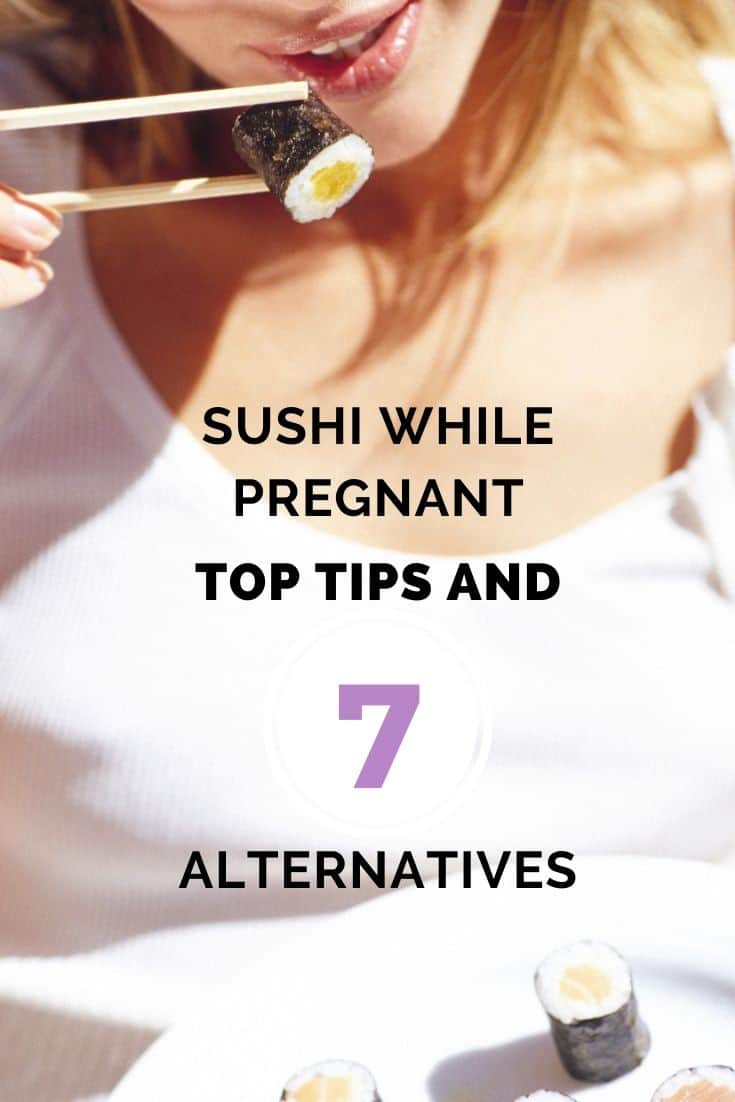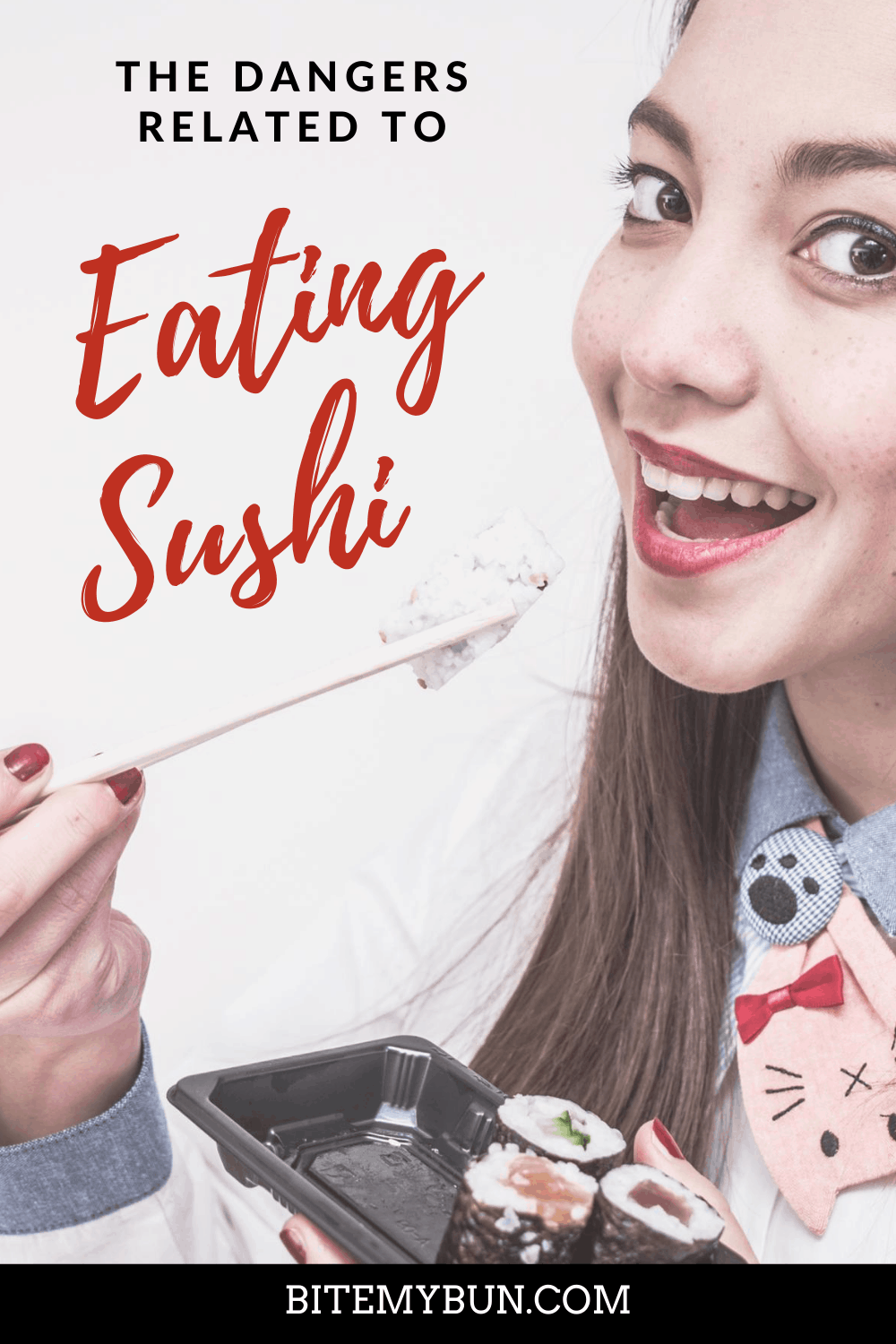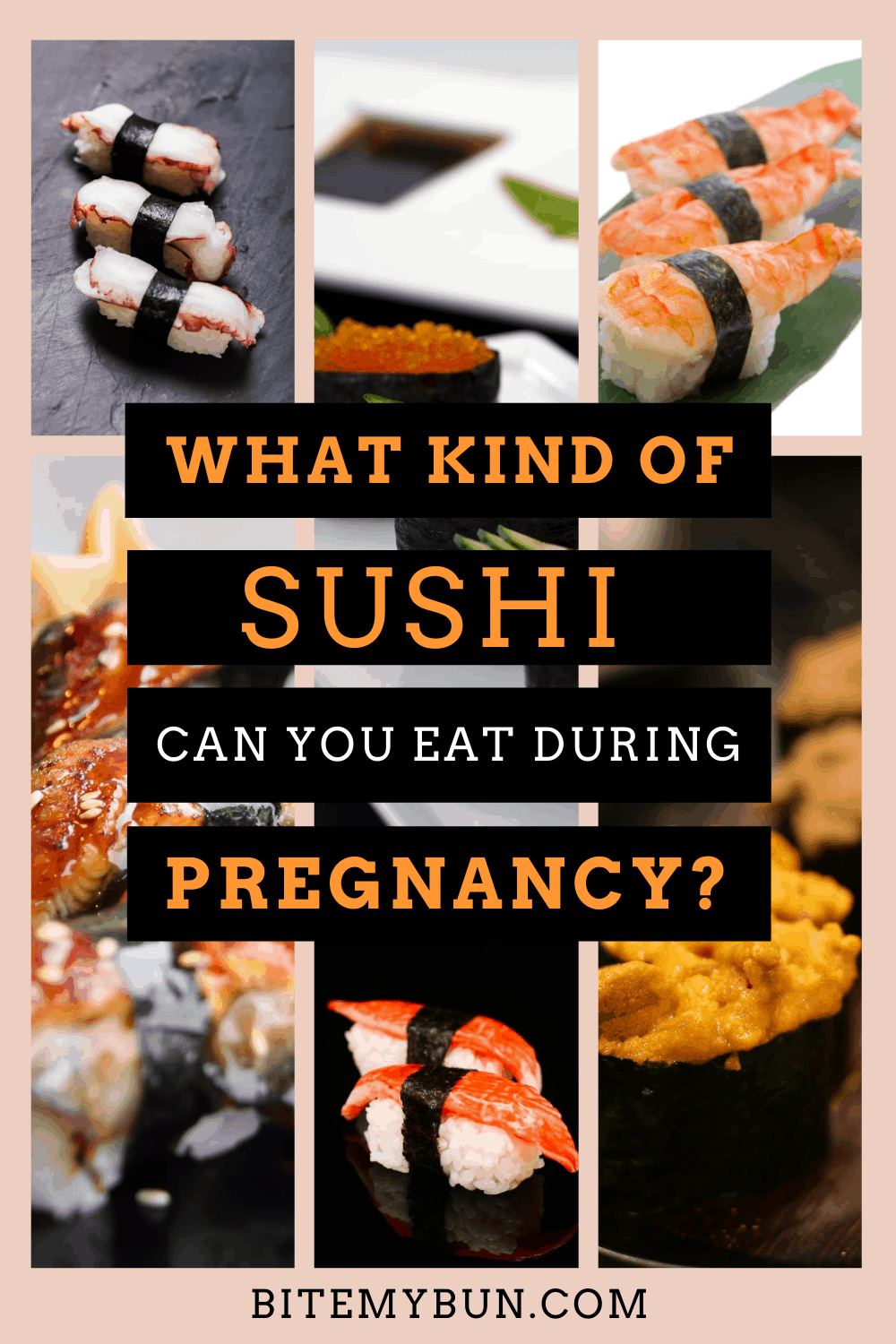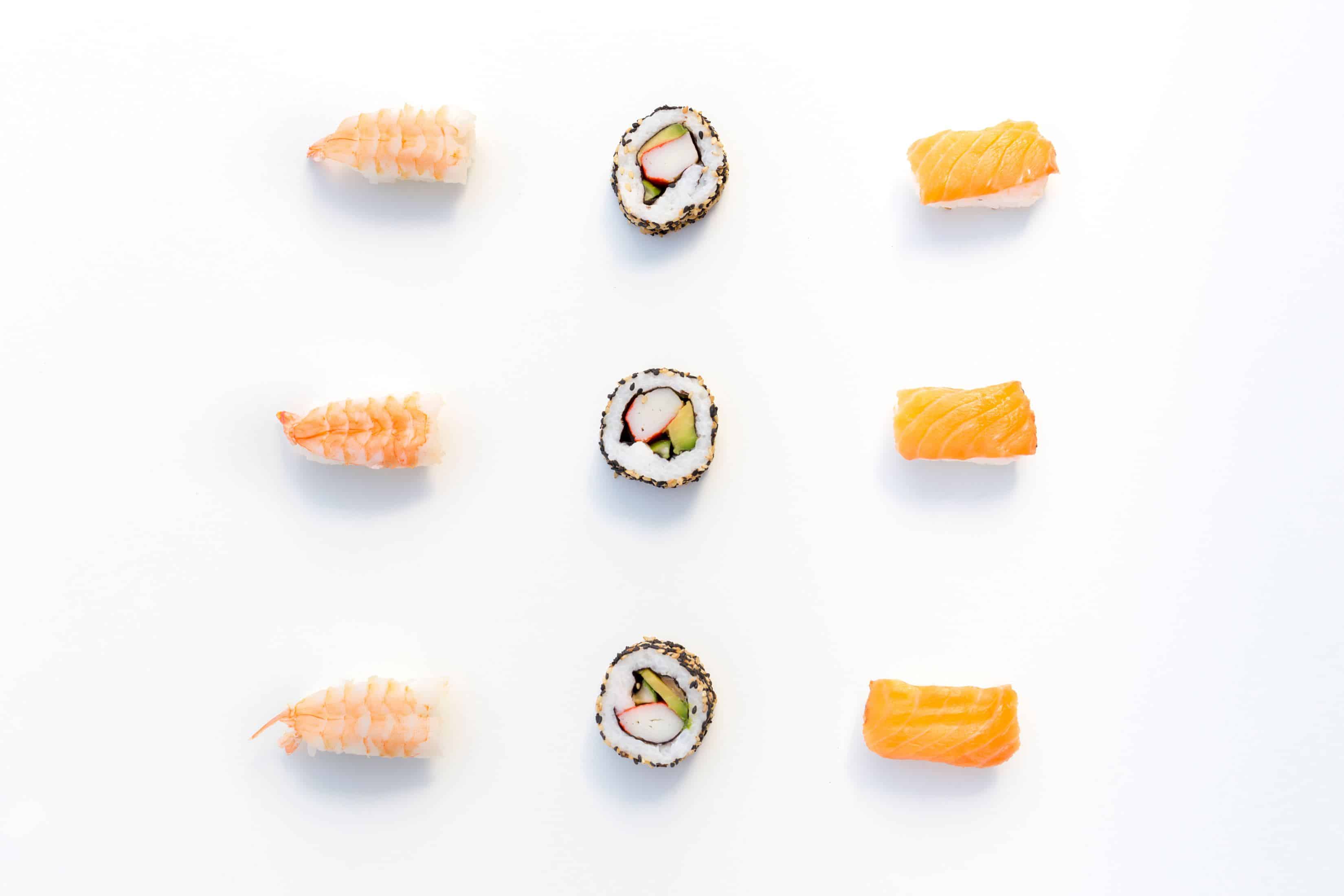Is It Safe for Pregnant Women to Eat Sushi? Tips & 7 alternatives
The thing about getting pregnant is that you can no longer come and go as you please.
There is another person inside your belly that shares a symbiotic relationship with you, albeit this one is a whole lot more sensitive than you are, and you have to place its needs before your own.
Everything you think and feel seems to come from a part of your body you don’t normally think about otherwise, what you could call the Control Womb.

The way you eat and how much food you eat is an indication of early signs of pregnancy.
You will experience an insatiable hunger despite medical science tells you that your baby only needs 300 calories a day to develop and mature.
It’s crazy, right? I mean, only 300 calories but you feel like you could eat an entire elephant and still be hungry in your first trimester!
Lest we forget, there’s also the morning sickness, which may be Nature’s way of counterbalancing your newly developed eating habits.
And that force of nature no one told you about – the crazy cravings of a pregnant woman, which can rival that of a category 5 hurricanes or a magnitude 9 earthquake.
It’s common knowledge that pregnant women get a “foods to avoid” list from the doctor throughout their pregnancy in order to ensure that the growing fetus inside their wombs will be born healthy and without any defects.
Raw fish is among that food that expecting mothers need to avoid due to their high levels of methylmercury.
Methylmercury is a very poisonous form of mercury and can cause liver infection in a pregnant woman – it’s also unsafe for the fetus.
The tuna that sushi restaurants use to make various sushi recipes contain a high amount of methylmercury and if consumed more than the recommended amount could cause health problems.
Another thing to worry about eating raw fish is a parasitic infection as much raw fish may contain parasites that can be harmful to pregnant women and their babies.
Also read: Can you eat miso when pregnant? The Japanese say yes!

Check out our new cookbook
Bitemybun's family recipes with complete meal planner and recipe guide.
Try it out for free with Kindle Unlimited:
Read for freeIn this post we'll cover:
- 1 Avoid Sushi that has Raw Fish
- 2 The Dangers Related to Eating Sushi
- 3 Sushi that’s Safe to eat During Pregnancy (Flash Freezing)
- 4 What Kind of Sushi Can You Eat During Pregnancy?
- 5 Sushi Rolls Alternatives that’s Good for Pregnant Women
- 6 Best Sushi Alternatives that Outweigh the Dangers of Eating Raw Fish
- 7 Benefits and Risks of Fish During Pregnancy
- 8 The Final Word on Eating Sushi While Pregnant
Avoid Sushi that has Raw Fish
It is better if you’ll save eating those sushi rolls that contain raw fish after you’ve given birth to your baby.
That’s because even though consuming those raw or undercooked fish may not harm your child, it can potentially harm you.
Typically, if you eat raw fish you will most likely get a parasitic infection or food poisoning and that can make you lose a lot of body fluids (dehydration) and you may need medical attention.
Also sometimes, although rare, the parasite that you’ve ingested from the raw fish in your sushi can block the nutrients from being delivered to your baby via the placenta, and instead absorb it for itself.
Although the chances of actually getting a contaminated piece of fish in this country are pretty slim, you had better play it safe and not jeopardize your baby’s wellbeing.
Thankfully you don’t actually have to avoid eating sushi entirely, because not all sushi dish have raw fish in them.
In fact, you can also opt for the California rolls (which are made with steamed crab or imitation crab, which is cooked), or sushi versions with other seafood varieties like shrimp or cooked eel.
You may also want to order other types of fish entrees that’s well-cooked as most restaurants cook their fish recipe at medium rare (seared on the outside and raw in the center).
If you decide to cook fish at home, cut it down the middle and open it to ensure that it will be cooked thoroughly.
When raw fish is exposed to heat more than 200˚ Celsius and for over 5 minutes, it effectively kills all bacteria and parasites.
Also read: is it safe to eat teppanyaki while being pregnant?
The Dangers Related to Eating Sushi

Not all sushi types are dangerous to pregnant women; however, those that contain raw fish and the way they are prepared can place pregnant women at a higher risk of preterm birth, miscarriage, and other unwanted childbirth-related issues.
Bacterial and Parasitic Infections
- If the fish in the sushi has been cooked before it was rolled with the sushi rice, then it’s safe to eat but raw fish in sushi can host bacteria and parasites like tapeworms. Getting a tapeworm infection while pregnant will cause the baby in the mother’s womb to be deprived of all the nutrients that were supposed to be given to the fetus, thus affecting its growth and development.
- But even if the parasitic infection will not affect your placenta, it can still mess up your liver and cause gastrointestinal disease that would still affect your baby indirectly.
- You could also become malnourished and have anemia from parasitic infections, which can lead to a miscarriage.
Suppresses the Immune System
- Due to hormone imbalance during pregnancy, your immune system is affected and can be suppressed. This also makes you prone to various illnesses and makes you especially susceptible to foodborne diseases like listeriosis.
Methylmercury
- It is unfortunate that the open ocean contains a significant amount of methylmercury as it is formed from inorganic mercury by the action of microbes that live in aquatic systems. Ocean predators like the king mackerel, swordfish, tilefish, and sharks are high in methylmercury, which is why eating too much of their meat is unsafe.
- Ingesting methylmercury in small amounts is already a health risk, ingest more and it will damage the nervous system, kidneys, lungs, vision, and hearing of the fetus in your womb.
Sushi that’s Safe to eat During Pregnancy (Flash Freezing)
The only fish that’s safe to eat if you’re pregnant are flash-frozen fish (seafood that is subjected to cryogenic temperatures, or through direct contact with liquid nitrogen at −196 °C or −320.8 °F, which kills all bacteria and parasites in them).
To be on the safe side ask the restaurant where you’ll be dining if their seafood is flash-frozen (most restaurants do this with their seafood as a standard operating procedure).
Be sure to use sumimasen when asking a waiter over to your table.
What Kind of Sushi Can You Eat During Pregnancy?

You can request the waiter to give you sushi made of fish with the lowest levels of methylmercury.
If you’ll check the seafood ingredients of sushi, then you’ll find that those larger and older tuna species are the most sought-after fish to make sushi – and these contain high levels of deadly methylmercury.
If you want to be certain that you’re eating fish that has low methylmercury content, then just visit the US National Resources Defense Council (NRDC) and find the fish varieties that are declared safe by the NRDC.
The NRDC has a list of approved seafood to consume for pregnant women for up to 2 x 60 ounces of servings per day, and they include:
- Akagai, Himo (Ark Shell)
- Awabi (Abalone)
- Anago, Hamo (Conger)
- Aoyagi, Hamaguri, Hokkigai, Mirugai, Tairagai (Clam)
- Ayu (Sweetfish)
- Ebi, Shako (Shrimp)
- Hatahata (Sandfish)
- Hotategai (Scallop)
- Ika (Squid) –
- Sake, Ikura (Salmon)
- Kaibashira, Tsubugai (Shellfish)
- Kani (Crab)
- Karei (Flatfish)
- Kohada (Gizzard Shad)
- Masago (Smelt Egg)
- Masu (Trout)
- Sayori (Halfbeak)
- Tai (ea Bream)
- Tako (Octopus)
- Tobikko (Flying Fish Egg)
- Torigai (Cockle)
- Unagi (Freshwater Eel)
- Uni (Sea Urchin Roe)
Types of Sushi to Avoid:
- Tuna (Ahi, Maguro, Meji, Shiro, and Toro)
- Mackerel (Aji, Saba, and Sawara)
- Yellowtail (Buri, Hamachi, and Inada Kanpachi)
- Bonito (Katsuo)
- Swordfish (Kajiki)
- Blue Marlin (Makjiki)
- Sea Bass (Seigo and Suzuki)
Sushi Rolls Alternatives that’s Good for Pregnant Women
Below you will find the different kinds of sushi rolls that have no raw fish in them and is completely safe to consume even while you are pregnant.
- California rolls
- Cooked salmon
- Eel rolls
- Shrimp roll
- Steak and chicken rolls
- Tempura rolls (crab, shrimp, and vegetable)
- Vegetable rolls
Best Sushi Alternatives that Outweigh the Dangers of Eating Raw Fish
There are sushi varieties that are very safe to consume for expecting mothers as these will not
harm their health nor the health of their baby:
Cured Fish Sushi
The only other way to kill bacteria and parasites in tuna meat besides flash freezing is by curing the fish.
The process of curing involves salting and pickling the fish with vinegar and salt as well as similar fluids in order to kill worms, parasites and bacteria while keeping the fish fresh and firm for consumption for a long period of time.
You start by applying salt to the fish and let it sit for about 1 – 1.5 hours, then rinse it with cold water and pat it dry with a paper towel.
After that, you soak the fish in vinegar and let it sit again for about 5 – 10 minutes, then dry it with a paper towel once again.
Once you’ve done all of these successfully, you may now use the fish for sushi and it should be perfectly safe as it has been cured.
Vegetable Sushi
This is the safest option to eat sushi as it replaces the raw fish with vegetables.
The fruits and vegetables that you can use include carrot, avocado, and cucumber.
The downside of making vegetable sushi is that it isn’t as appealing as its meaty counterpart; however, if you prepare it with the right ingredients and calibrate its flavors, then you can rock people’s pallets with it.
Homemade Sushi

The advantage of cooking sushi at home is that you can apply more hygienic methods to its preparation and serving.
Put the fish in the freezer and set the temperature to the lowest setting (food that is properly handled and stored in the freezer at 0° F or -18° C will remain safe).
Keep the fish in the freezer for 4 days in order for the parasites and bacteria to be effectively killed off.
Sushi and PCB Chemicals
One thing that has experts worried about seafood whether raw or cooked is the possible contamination of PBC (polychlorinated biphenyl) chemicals.
It is an organic chlorine compound that has been in use since before the 1960s and has spread to the environment – the problem is this compound causes cancer in animals and are probable human carcinogens.
You may want to contact your local health department or office of the Environmental Protection Agency (EPA) and ask them for information about what kinds of fish are safe and not safe to consume in your particular area during pregnancy.
It’s also safer to eat ocean fish than their river and lake varieties, but still, you may want to avoid them altogether while you’re pregnant.
If you’re going to order fish while dining out in a restaurant, always ask them to be well-cooked.
Many upscale eateries lightly sear fresh fish on the outside and then serve it rare.
But just remember that more people get sick from eating home-cooked fish than eating fish at a sushi joint both in Japan and the US.
Guidelines to Cook Fish
Cooking fish with a meat thermometer is more efficient as it can tell you if the meat is seared at the right temperature; however, in case you do not have one, you can follow the steps below and cook your raw fish right.
- Lay the fish on its side on the kitchen counter and slip the tip of a sharp takohiki chef’s knife into the fish and slice it slowly. Once you’re able to cut the fish in half, lay the 2 halves again on the table and debone the fish.
- Start cooking the fish by broiling it and edges should be opaque and the center slightly translucent with flakes beginning to separate. Let it sit for 3 – 4 minutes until it cooks.
- On the other hand lobster and shrimp become red in color in their external shells once cooked and their flesh turns into opaque-pearly color. Scallops react differently with heat and they appear milky-white to opaque in color range and their flesh becomes firm when cooked.
- You will know when oysters, mussels, and clams are cooked because of their shells open and you can see their meat inside. The shells that did not open are not cooked properly and therefore must be thrown away as they have no use.
- Rotate the dish where you’ve placed the seafood several times when you microwave it in order to ensure that the seafood is evenly cooked. Once the timer has reached zero, take out the seafood and transfer it to a clean plate on the kitchen counter, then stick a digital meat thermometer on different parts and check if the entire seafood has reached the right temperature for it to be considered properly cooked.
The 1997 FDA’s Food Code suggests that people should cook most seafood at 145˚ Fahrenheit (63˚ Celsius) for about 15 seconds at its core – meaning not just on the outside, but its insides should read at these temperatures when you stick a digital thermometer into it.
The pregnant woman and her fetus are given priority over food safety concerns in general, because of the nature of their sensitive state during the woman’s gestation period where both are more susceptible to some food-borne illnesses.
The 2 most risky food-borne pathogens for pregnant women are:
Toxoplasma
- Listeria monocytogenes
- Salmonella enterica
These organisms can be passed to the fetus and increase the risk of spontaneous abortion, stillbirth, or perinatal complications.
However, these organisms are not linked to eating sushi.
Eating sushi and sashimi in moderation is still considered non-harmful for pregnant women, although they ought to prefer salmon and shrimp or other low methylmercury fish instead of tuna.
In Japan, women who become pregnant are not advised to stop eating sushi (not even as a health taboo) and the Ministry of Health, Labour and Welfare of Japan does not, in any way, give warnings to pregnant women to stop eating raw fish also.
In fact, chefs and other food authors who write food recipe books for pregnant women in Japan proactively say that sushi should be a part of their diet as it is considered a healthy, low-fat alternative during pregnancy.
In Japanese tradition, it is considered a good fortune for postpartum women to eat sushi and sashimi in the hospital while they’re recovering and that eating raw fish brings good health as well.
On the other hand, pregnant women in the United States get a handful of warnings from their doctors to stay away from raw fish and recipes that contain raw fish like sushi and sashimi as they can contain bacteria and parasites that are not only harmful to their health but to their fetus as well.
However, the US Health Department does not mention any specific bacteria or parasites found in raw fish and they also fail to mention that fish prepared at sushi restaurants in the United States are flash-frozen by fish dealers before they sell it to restaurants, which kills off 99.99% of bacteria and parasites in the fish.
Also read: can I safely eat ramen noodles when pregnant? What you need to know
Tropical Fish Poisoning
Some tropical fish contain certain toxins that may harm a person who eats it whether cooked or raw – this is called tropical fish poisoning.
Ciguatera poisoning is the most common form of fish poisoning and it is noted by the US Department of Health to be the fish type responsible for causing up to 1 million cases of fish poisoning in the Caribbean and South America.
The Ciguatera fish toxin is common in the waters of the Carribean and South Pacific, thus fish caught in these areas tend to cause tropical fish poisoning.
People get poisoned due to eating fish (raw or cooked) that have ingested a microalga called Giambierdiscus toxicus.
Signs and symptoms of persons poisoned with Ciguatera include:
- Nausea
- Vomiting
- Abdominal Pain and Others
Note: these symptoms show within 2-6 hours after eating the contaminated fish and there is no specific treatment for this fish poisoning.
Aside from Ciguatera, there are also other toxins that the fish ingest which include:
- Scombroid
- Tetrodotoxin
- Saxitoxin (the rarest and most lethal of all the toxins)
Having this much risk in eating seafood medical professionals and government health agencies are discouraging pregnant women from consuming harmful seafood altogether.
This is potentially harmful since the fatty acids in fish are the ideal nourishment for a developing baby.
Also read: what different types of sushi are there?
Benefits and Risks of Fish During Pregnancy
One simple fact that we all can agree on is that food is good for you.
The nutrients from seafood, especially fish, is so crucial to your child’s health that not getting enough of it can upset your baby’s brain development.
But didn’t the CDC (Center for Disease Control), US Department of Health and other medical professionals wants you to stay away from seafood while you’re pregnant?
This is what the National Academy of Sciences Institute of Medicine had to say about illness from eating seafood in their 1991 report:
“Most seafood-associated illness is reported from consumers of raw bivalve mollusks…”
A government calculation from some years ago was once published and found that the risk of falling ill from eating seafood is 1 in 2 million servings (this is already excluding raw and partly cooked shellfish from the equation).
You are, in fact, at a higher risk of getting sick from eating chicken than eating seafood as there is 1 in 25,000 chances of getting an illness from eating chicken meat.
Overall, 76 million cases of food poisoning are reported each year.
The report goes on to say that they’ve pinpointed the health risk of eating non-mollusk seafood and it’s not by eating them raw.
The NASIM concluded that the problem is;
“cross-contamination of cooked by raw product, which is usually associated with time and temperature abuse.”
What this means is that no matter what type of seafood you order while eating out in a restaurant (whether raw or cooked), unless they properly manage its temperature and ensure safety measures to keep it from being contaminated, then you’ll still be at risk of getting an infection.
The Final Word on Eating Sushi While Pregnant
Your doctor will probably advise you to stay away from seafood while you’re pregnant and so do we.
You must not consume the following food items during your pregnancy:
- Raw and uncooked meats or seafood
- Unpasteurized cheeses
Also, you must make certain to thoroughly wash any raw salads or vegetable before consuming them.
While most people will tell you that eating sushi that doesn’t have any raw fish in it, it would be wise to avoid them altogether and just wait for 9 months before eating them again.
You must never put your or your baby’s safety at risk.
Read more: the beginners guide to sushi and all you need to know
Check out our new cookbook
Bitemybun's family recipes with complete meal planner and recipe guide.
Try it out for free with Kindle Unlimited:
Read for freeJoost Nusselder, the founder of Bite My Bun is a content marketer, dad and loves trying out new food with Japanese food at the heart of his passion, and together with his team he's been creating in-depth blog articles since 2016 to help loyal readers with recipes and cooking tips.

